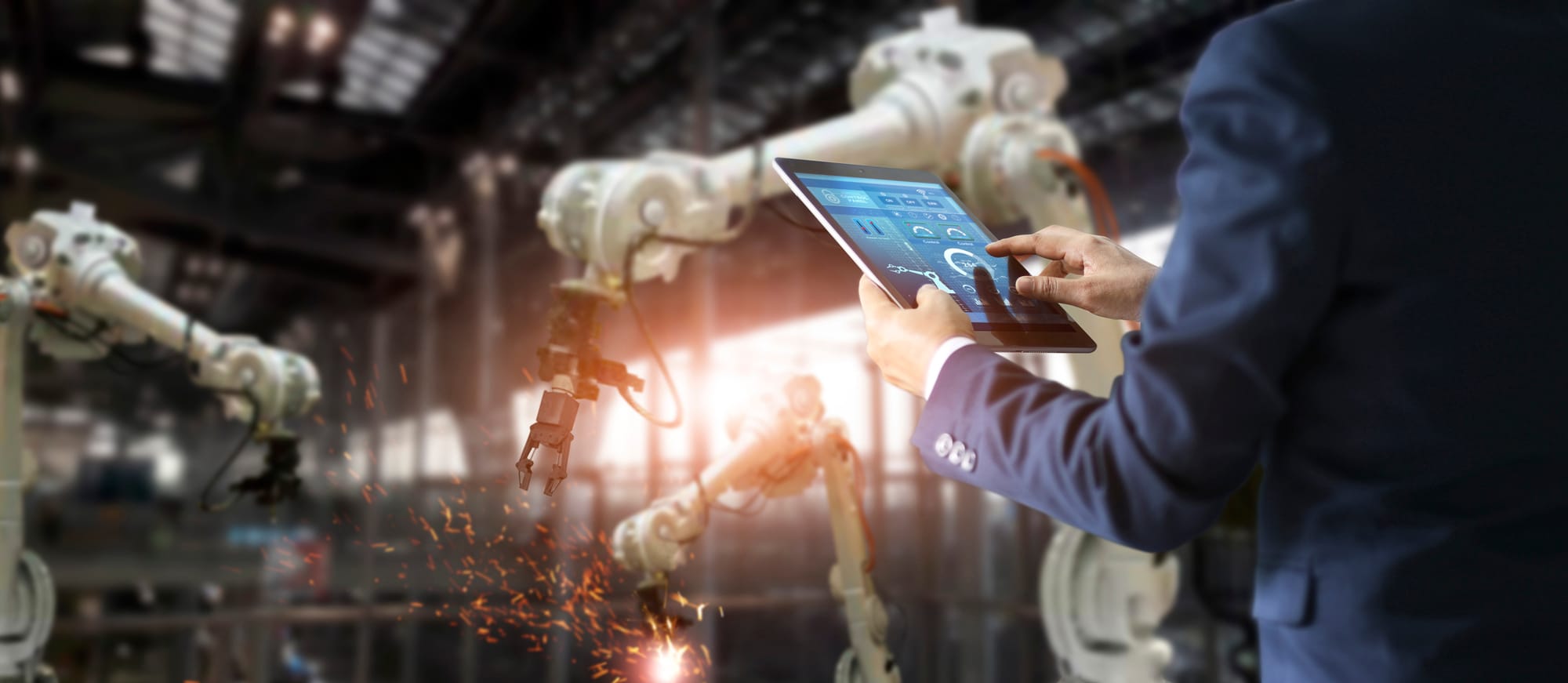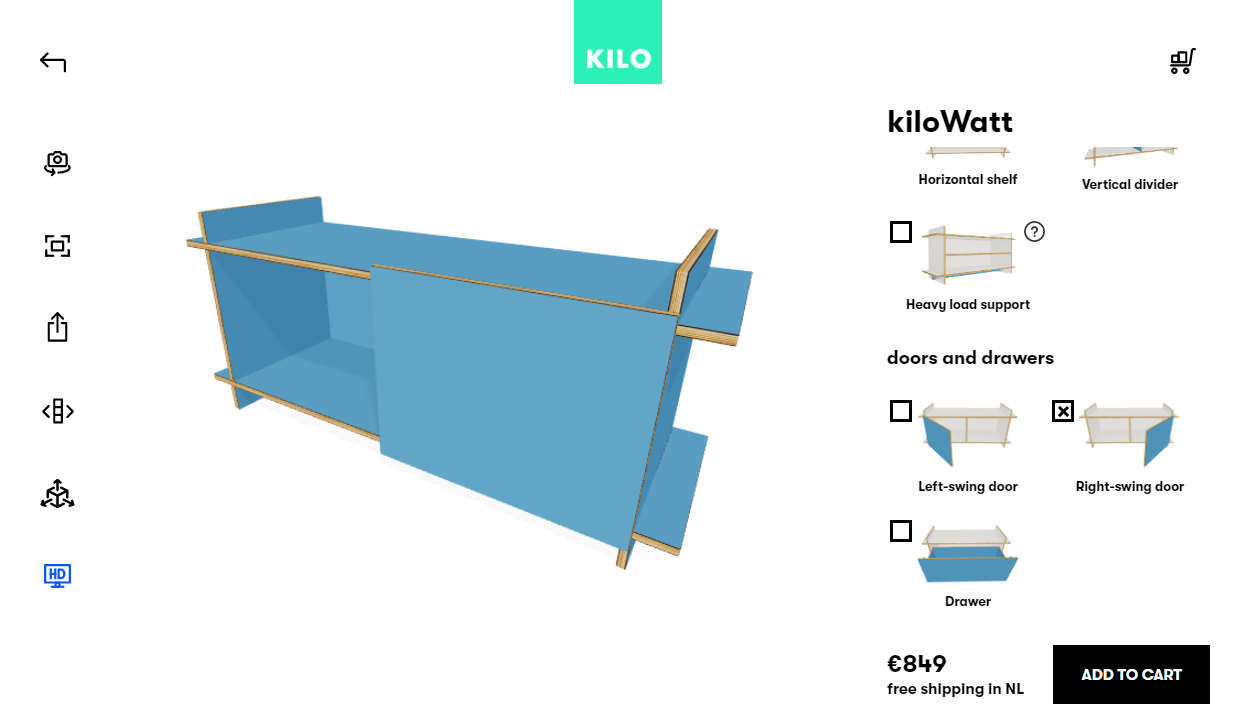Enable Business Automation with a 3D Product Configurator
3D product configurators play a crucial role in enabling process automation and maximizing product value. In the past, customers were content making purchases with only 2D still images. Now, customers want real-time 3D visualization of the products they intend to buy.

3D product configurators play a crucial role in enabling process automation and maximizing product value. In the past, customers were content making purchases with only 2D still images. Now, customers want real-time 3D visualization of the products they intend to buy.
According to Grand View Research, the 3D visualization and rendering market will reach $5.63 billion by 2025, with a CAGR of 22.5% and 3D product configurators will be central to helping businesses remain competitive.
Brands that leverage 3D product configurators to allow greater automation can enhance the sales process, test new product concepts, and execute their business strategy more effectively. Are you curious to know how 3D product configurators make this possible? Read on to find out.
The Rise of 3D Product Configurators
3D visualization offers a promising solution for online retailers seeking innovative and affordable technologies to increase conversions. 3D product configurators have seen widespread usage in several industries and among different luxury brands.
Here are examples of a few sectors that have successfully implemented 3D product configurators:
Footwear Industry
Nike successfully implemented a 3D product configurator to showcase different variations of their footwear.

Furniture Industry
KILO enables limitless customization of different kinds of furniture.
Automotive Industry
Audi is one of the most successful vehicle manufacturers globally. It implemented a real-time product configurator that increased user engagement by 66%.
The Challenges in Enabling Business Automation
Let’s have a look at some of the challenges that enterprises face in enabling seamless business automation:
Inadequate Software Implementation
Some brands with complex products find it quite challenging to integrate a configurator with specific features and capabilities. That is because every business has its own unique requirements, technical architecture, third-party software, data, and so forth.
Poor Business Workflow
Some brands lack sophisticated workflow capabilities due to outdated legacy systems or the use of spreadsheets. This makes it challenging to integrate with other business software such as CRM (customer relationship management).
Resource Constraints
Without a highly customizable product configurator, it is difficult for brands to manage resources. Putting in place the appropriate resource constraints requires detailed heuristics to capture all use cases, materials, and product configurations.
How Product Configurators Facilitate Business Automation
Less Salesperson Involvement
Self-service is becoming more popular. With it, brands can build more automated processes, ensuring faster sales and becoming less reliant on salespeople to communicate with buyers. 3D product configurators enable the automation of a buyer's journey, freeing salespeople to create value for customers in other areas.
Faster Order Processing
Personalization is a prominent trend in eCommerce today. Modern customers prefer to associate with brands that offer customization and personalization options; they don’t want to browse through extensive generic product images and descriptions.
As a salesperson, it can be daunting to have hundreds of product variations to contend with when communicating with buyers. There is a lot of back-and-forth, consulting product databases, confirming customer preferences, and sometimes contacting the manufacturing team. This extends the ordering process, impeding customer experience and creating additional load ont employees.
With a 3D product configurator, each order can be validated automatically by the application as soon as it is created. This minimizes unnecessary interactions between the customer and vendor.

Continuous Improvement of the Knowledge Base
For manufacturers, developing new products is an expensive and time-consuming endeavor. 3D product configurators incorporate structured knowledge about products that customers and manufacturers can leverage. They can use it to test out product ideas and evaluate different options to gauge consumer interest.
Document Generation for Manufacturing Automation
Apart from automating the process of ordering and configuring products, you can also automate the process of generating orders and sending them directly to production. By integrating with an ERP system, you can connect the 3D product configurator with the production process to communicate order details and product configuration specifications.
Workflow Automation by Integrating with Business Critical Systems
A 3D product configurator isn’t just a standalone siloed system. It can integrate and share data with your enterprise solutions such as ERP (enterprise resource planning), CRM, and CDP (customer data platform) to facilitate better workflow automation.
How Salsita 3D Configurator Enables Better Business Automation
3D product configurators can enhance customer experiences, facilitate faster sales, generate higher ROI, and deliver better business automation. That is why there has been growing interest in configurators in many industries across the globe.
Salsita 3D configurator helps enterprises create distinctive and personalized product visualizations. One enterprise use case that stands out is L’Atelier Paris Haute Design. The French range manufacturer needed a solution for potential customers to create personalized, high-end kitchen ranges.
By leveraging Salsita 3D Configurator, they were able to implement better business automation through integrations with existing enterprise systems. Other benefits include less human involvement, faster order processing, reduced risk or error and better engagement and sales.
Want to know how L’Atelier made this possible? Read the case study or contact Salsita today.


